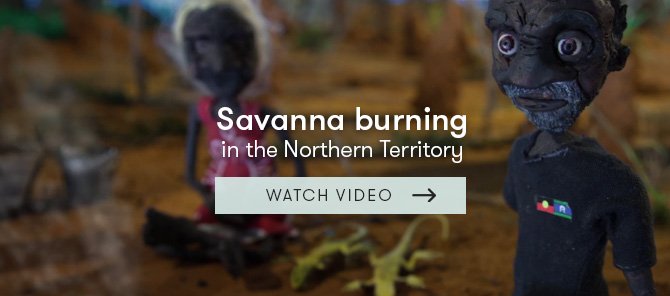Bushfires 2: Managing landscapes
Expert reviewers
Essentials
- Indigenous Australians have long-established fire practices that have modified and shaped the landscape.
- Prescribed burning is undertaken by land owners and government agencies to manage land, for either hazard reduction or other ecological purposes.
- Hazard-reduction burning is a form of prescribed burning that is conducted to reduce fuel loads, with the aim of preventing catastrophic bushfires.
- Prescribed burning is a contentious issue, with ongoing debate and research regarding the optimum methods for burning.
- The savanna burning projects in northern Australia integrate Aboriginal traditional ecological knowledge of fire mananagement with the latest science to carry out controlled burns of the savanna regions. These burns prevent catastrophic wildfires and mitigate the greenhouse gas emissions caused by such events.
The Australian bush is iconic and beautiful. However, for those who live in its midst, it also brings the risk of bushfires, which can often have devastating impacts. People who live in or near the bush (including highly-settled urban areas) have a personal responsibility to construct their own bushfire plans and be prepared to implement them in case of a fire. Along with this, a central component of bushfire prevention and the mitigation of damage caused by bushfires is land management.
Although catastrophic bushfires can lead to untold damage, fire can benefit the Australian bush as well. Today’s prescribed burning practices—where fires are purposefully lit under controlled conditions and closely monitored—are conducted with the aims of not only reducing fuel loads to prevent catastrophic fires, but also improving ecological systems.
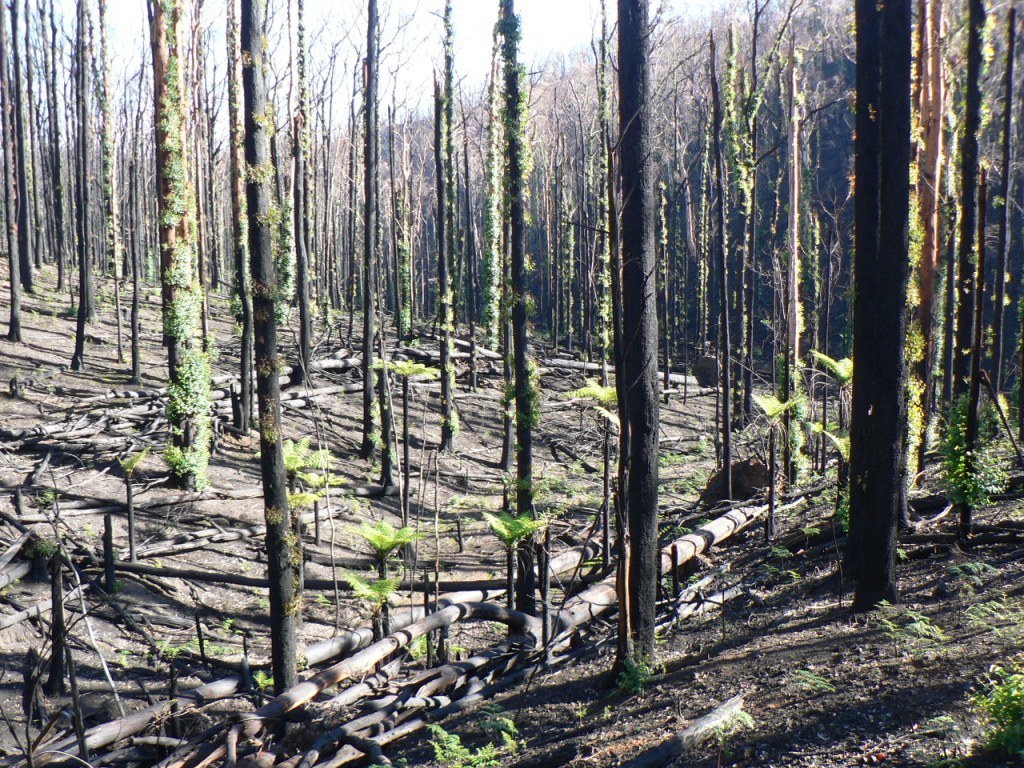
Indigenous fire management
The Australian continent has a long history of fire, with records showing that wildfires occurred here as far back as 400,000 years ago. Sediment records show an increase in the presence of charcoal which has been attributed to the burning practices of Indigenous Australians.
The traditional relationship between Australian Aboriginal people and the land is underpinned by caring for country; a reciprocal relationship for land management. Fire management is at the very heart of this relationship. There are long-established practices of burning the landscape in all areas of Australia, sometimes known as firestick farming or firestick ecology.
Fire can be seen as a ‘cleansing agent’, leaving a landscape that’s clean and primed to bloom again. Many areas would be purposefully burned at regular intervals to maintain areas of grassland, preventing the vegetation from becoming too thick and woody. Some historians have even suggested that many areas of dense bushland that are now carefully preserved would actually have been viewed as ‘dirty country’, land that had ‘run wild’.
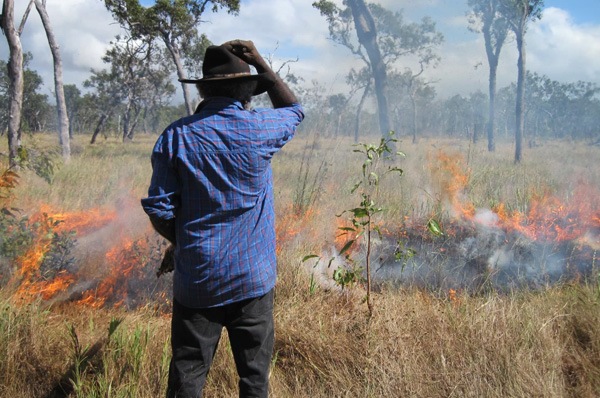
Not only did these practices reduce fuel loads, meaning that catastrophically intense fires were less common, careful management and timing encouraged the growth of particular types of plants, providing habitats for certain animals. Fires were also used as a hunting tool, for example by using small lines of fire to drive animals such as kangaroos towards hunters.
As the timing and location of fires would be carefully managed, the landscape would become patterned in a ‘mosaic’ of areas of varying degrees of regeneration. This patchy landscape supported a variety of wildlife species. These practices also supported certain species of plants, such as in Cape York, where fire encourages the growth of eucalypts in areas that would otherwise be dominated by rainforest. Elsewhere in the monsoon tropics, the native conifer Callitris intratropica was maintained by managed burning.
Different Indigenous groups had different burning practices, according to the various landscapes in which they lived and moved through. Men's methods differed from women's because they had different purposes underlying their burning practices.
As described by a member of the Nyungar people from south-western Western Australia:
Karl (fire) is at the very heart of our culture. In our language, karl not only describes fire, but also our immediate or nuclear family … An extension to this is karlup, the name given to my home country. Literally translated, it is the place of my fire, my family place, my home.Glen Kelly
The Nyungar people use two types of fire: cool fire (low intensity) and higher intensity burns. Cool fires are used to clear the undergrowth, particularly with the aim of improving access and movement through the bush. They also are used to promote new growth, as the first plants to reappear after a fire tend to be those highly valued as food sources. Cool fires are also used in careful patterns to promote grass growth to maintain grazing areas for native animals and reduce flammable fuel load.
Cool burning involves lighting small fires on areas of wet ground. The small fires go out quickly, but create small firebreaks. Continued burning of small patches creates larger firebreaks, where regrowth of grass encourages grazing animals like kangaroos. The small firebreaks join up to make a ring around areas that can then be subjected to a stronger burn.
Fires of greater intensity are used to maintain adequate growth within certain areas of vegetation. Thickets of spearwood, or Wattan, need a high germination rate to maintain their density. After 10–15 years the thickets begin to lose their dense structure and a hot fire is required to spur on regeneration and new, thick growth. These areas must be protected from cool fires, as they will simply damage the thicket before a sufficient seedbed has been established.
Another effect of these managed burns was the long-term maintenance of grassland until it degenerated to a point where it was no longer very nutritious for animals. Grasslands would then be cultivated elsewhere and the degraded grassland allowed to rejuvenate.
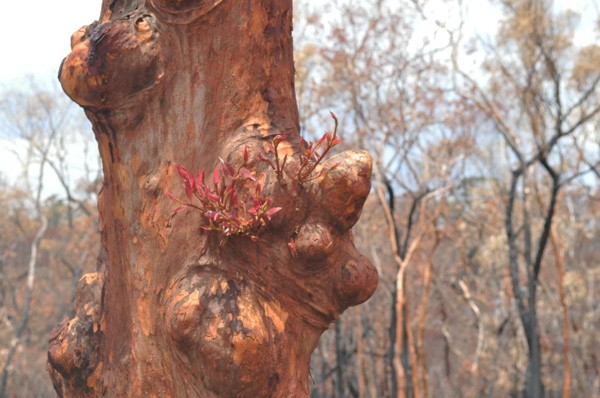
Critical to Aboriginal burning practices was the timing. Different Aboriginal people across Australia have their own seasonal calendars based on local indicators such as the flowering of particular plants that are used to identify the time of year to carry out burning.
Contemporary prescribed burning
Prescribed burning is the practice of lighting managed fires according to a fire plan. Prescribed burning is undertaken to achieve different outcomes, either for public safety (hazard reduction burning) or for maintaining the ecological health of bushland and forests.
A fire can’t burn if it doesn’t have enough fuel, so one of the ways of minimising the impact of bushfire is through fuel reduction. An effective way to remove fuel is to burn it. This is termed hazard reduction burning, and is done under controlled conditions. Areas of bush are deliberately set alight during the cooler months, with the aim of reducing fuel loads, helping to mitigate bushfires by reducing their intensity and enabling easier suppression.
For instance, as part of its annual prescribed burn season, the Department of Parks and Wildlife in Western Australia burns up to 100,000 hectares of the state’s south-western forests. The department says prescribed burns also help maintain the biodiversity of ecosystems across the state, and rehabilitate vegetation after disturbances such as timber harvesting and mining.
Following the devastating bushfires in Victoria in 2009, the Victorian Bushfires Royal Commission recommended a prescribed burn target of 5 per cent of public land each year. However, this has since been modified. Rather than pursuing a target number of hectares of land to burn each year, the Victorian Government is opting for a risk-reduction approach, with a strategic focus on hazard reduction in areas closer to houses or infrastructure.
Prescribed burning is a contentious issue. Not everyone believes that it’s an effective land management tool, and some say that the smoke it produces can be hazardous to other industries, particularly agriculture. Others argue that even greater areas should be burnt.
There is a risk of prescribed burns escaping, causing loss of property. Even when successfully conducted, there is no guarantee they will reduce the risk of bushfires occurring. This is particularly true on days of very strong winds when long-distance spotting is a problem.
The effectiveness of prescribed burning is an active field of invesigation, with many scientists currently examining it from a number of different perspectives. One area of research is the effect of repeated burns on animal and plant species. It’s believed that inappropriate fire regimes (or indeed, a complete lack of a fire regime except for unmanaged wildfires) since European settlement have already been responsible for the extinction of two bird species—the Kangaroo Island Emu and the Northern Scrub-robin—as well as endangering many other bird varieties.
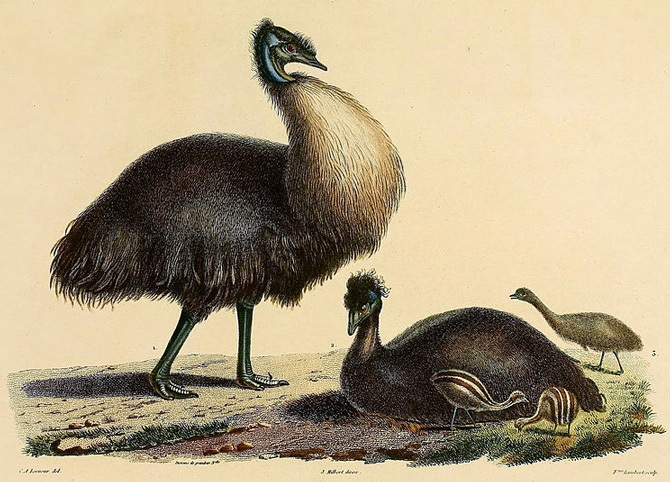
Large wildfires have also led to a drop in wildlife populations. The fires in 2005 and 2006 in the Ngarkat Conservation Park in South Australia were damaging to the habitat and populations of the already threatened Western Whipbird and Mallee Emu-wren. On the other hand, there is evidence that shows that the exclusion of fire from some forests results in the decline of the eucalyptus overstorey.
All this means we need to better understand the fire regimes for each ecosystem in order to ensure continued ecological health, while maintaining community safety.
Another tricky issue is deciding how often we should carry out prescribed burns. A long-term study in the tropical savannas of Kakadu National Park by CSIRO raised concerns that overburning is leading to the disappearance of native wildlife. The study suggested that some native mammal populations needed to be fire free for up to five years to ensure their long-term survival.
Just one example of a contemporary approach to controlled burning is the guidelines established by the Queensland Government listing the preferred intervals for prescribed burns for a large range of ecosystems. These intervals range from 2.5–3 years, to 4–10 years, to up to more than 30 years, depending on the ecosystem type and its dominant plant species. The guidelines also include information on the best time of year to conduct the burn, and its optimum intensity.
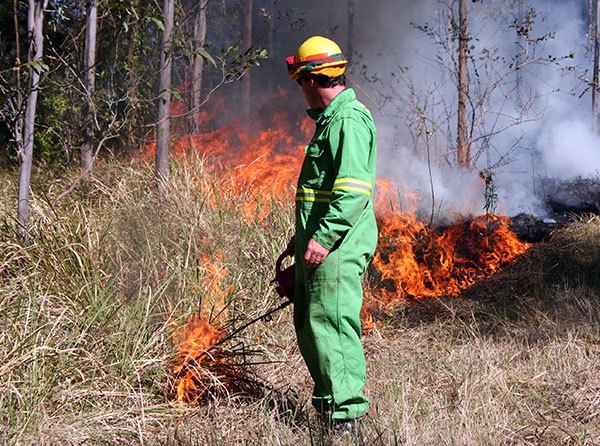
Northern savannas fire management
The tropical grassy savanna regions of Australia’s north are very prone to fire. The monsoon rains that fall during the summer result in the rapid growth of grasses, which cure rapidly during the dry season that follows. This creation of fuel, along with the hot, windy conditions of the dry season, make for a fire-prone region.
The emissions from severe fires in the savanna region can contribute to up to 3 per cent of Australia’s greenhouse gas emissions. The carbon dioxide (CO2) released into the atmosphere is thought to be (re)sequestered by the growth of grasses in the following season, but other greenhouse gases, such as methane (CH4) and nitrous oxide (N2O) are not so readily removed from the atmosphere, and will accumulate. More intense fires, that burn substantial, woody fuel, release even greater amounts of methane and nitrous oxide. These fires tend to occur towards the end of the dry season.
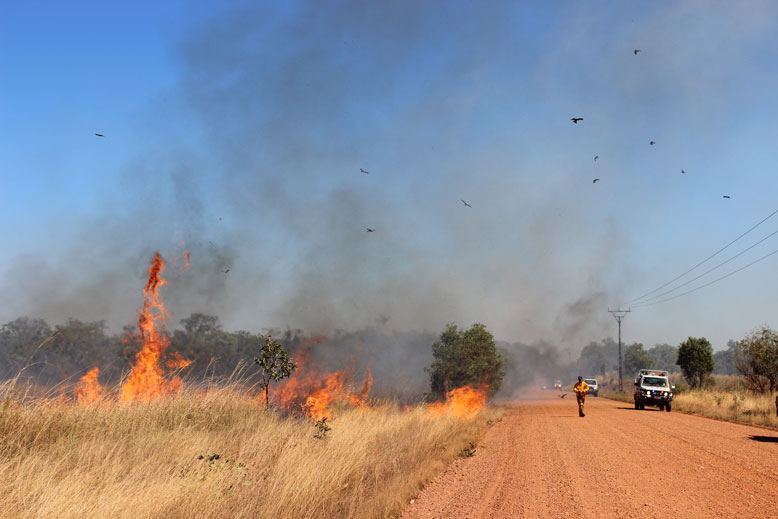
Aboriginal peoples' traditional ecological knowledge (TEK) dictates a season-long pattern of burning according to nuanced seasonal cues, varying from region to region. Combining this with satellite data, the Northern Australian Indigenous Land and Sea Management Alliance's Carbon Project oversees carefully managed burning of the savanna regions. These burning regimes create firebreaks that help prevent large-scale wildfires.
A number of Aboriginal groups in Northern Australia have restored their traditional burning practices, and also developed ‘carbon farming’ projects. This not only improves habitat diversity and cultural values but also mitigates the emission of greenhouse gases. Partnerships between Indigenous land managers and other stakeholders have had excellent results in reducing emisisons, while at the same time building scientific and social collaboration in the region.
The above video on savanna burning contains some information about the Carbon Farming Initiative which may no longer be accurate.






